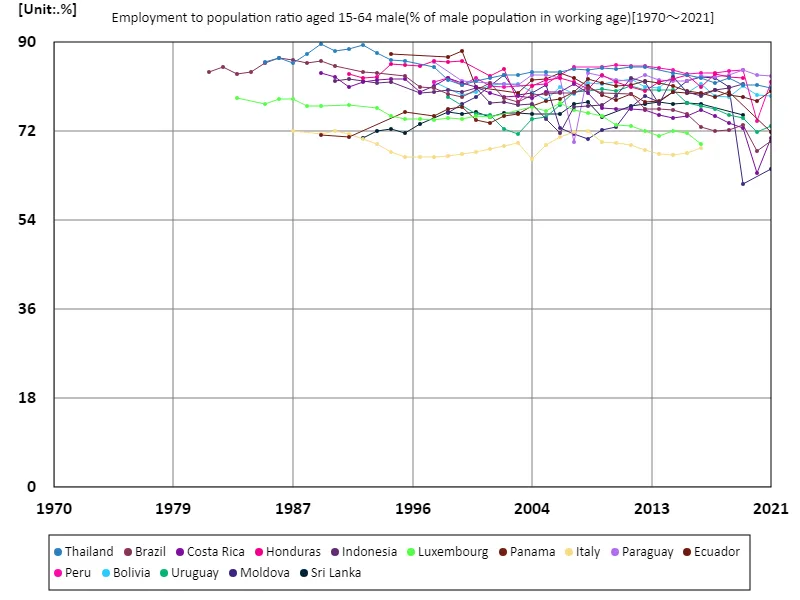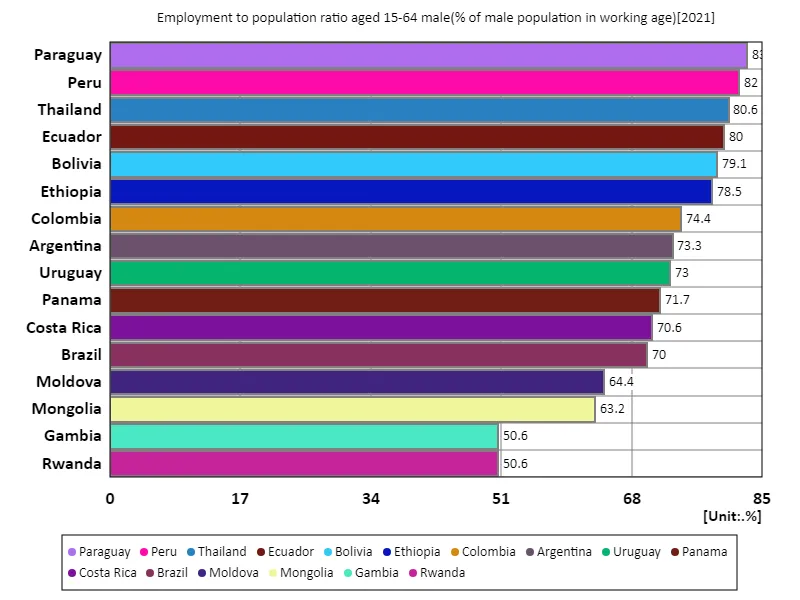- Abstract
- Employment rate of clerical workers for men aged 15-64 (percentage of working-age males in the working population)
- Employment rate of clerical workers for men aged 15-64 (percentage of working-age male employed population) (worldwide)
- Employment rate of clerical workers for men aged 15-64 (percentage of working-age males in the workforce) (worldwide, latest year)
- Reference
Abstract
In recent years, the global employment rate for men in clerical positions has shown varied trends. Developing countries like Colombia have seen a notable rise, with Colombia’s 2021 figure reaching 4.61%, reflecting increasing opportunities in administrative and support roles. Historically, clerical jobs have been more prevalent in developed economies due to urbanization and service sector growth. However, in emerging markets, technological advancements and expanding industries have led to an uptick in clerical employment, particularly as businesses and governments expand their administrative functions.
Employment rate of clerical workers for men aged 15-64 (percentage of working-age males in the working population)
From 1981 to 2021, the global employment rate of men aged 15-64 in clerical jobs has fluctuated significantly. Honduras reached its peak in 1997 at 53.2%, a reflection of the country’s rapid urbanization and growth in administrative sectors. However, since then, the rate has dropped by 4.8%, likely due to shifts in the economy, including increased automation and the decline of traditional clerical roles in favor of digital and technical positions. In many countries, clerical work has shifted from manual office tasks to more specialized, tech-driven roles, mirroring global economic transformations.


The maximum is 89.6%[1989] of Thailand, and the current value is about 89.9%
Employment rate of clerical workers for men aged 15-64 (percentage of working-age male employed population) (worldwide)
From 1981 to 2021, the global employment rate of men aged 15-64 in clerical jobs has seen significant shifts. Honduras reached its peak of 53.2% in 1997, driven by rapid urbanization and a growing administrative sector. However, the rate has since declined by 4.8%, reflecting broader economic changes. The rise of automation, digital technologies, and outsourcing has reduced demand for traditional clerical positions. As economies evolve, many clerical tasks have shifted to more specialized, technology-driven roles, reshaping the labor market in both developing and developed nations.


The maximum is 89.6%[1989] of Thailand, and the current value is about 89.9%
Employment rate of clerical workers for men aged 15-64 (percentage of working-age males in the workforce) (worldwide, latest year)
In 2021, Colombia led the global employment rate for men aged 15-64 in clerical jobs at 4.61%, surpassing the global average of 2.19%. This highlights Colombia’s growing service sector and increasing administrative job opportunities. Globally, clerical roles make up a significant portion of employment, with 13.2% of the working-age male population in such positions. The trend reflects economic shifts, as developing nations like Colombia embrace urbanization and business expansion, while automation and digitization continue to reduce clerical job growth in more advanced economies. This shift impacts labor market dynamics worldwide.


The maximum is 83% of Paraguay, the average is 71.6%, and the total is 1.15k%



Comments